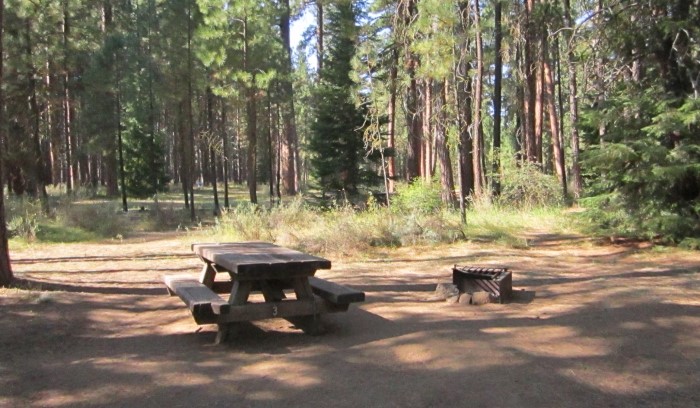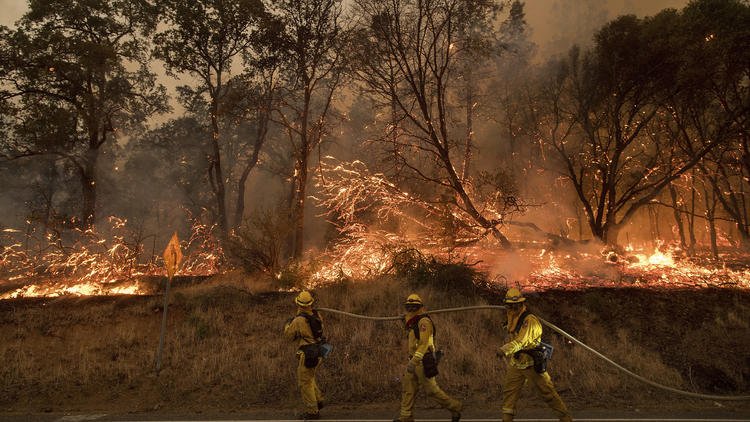The latest news stories and stories of interest in the Willamette Valley and around the state of Oregon from the online digital home of the valley, WillametteValleyMagazine.com
Wednesday, April 29, 2020
Willamette Valley Weather
Today 20% chance of showers. Mostly cloudy, with a high near 71. West southwest wind 8 to 10 mph, with gusts as high as 18 mph. Overnight a 20% chance of showers, low around 48.
Thursday A slight chance of showers between 8am and 2pm. Cloudy, then gradually becoming mostly sunny, with a high near 64. Chance of precipitation is 20%.
Friday Partly sunny, with a high near 68.
Saturday Rain, mainly after 11am. High near 63. Chance of precipitation is 90%.
Sunday Showers likely before 11am, then rain after 11am. Cloudy, with a high near 58.
Monday A chance of showers. Partly sunny, with a high near 62.
Today’s Headlines
Lane County is reporting 50 Covid-19 cases as of this morning, with two deaths in the county as of this date.

State of Oregon reporting 7 new COVID-19 deaths yesterday, 31 new cases, 2385 cases total
COVID-19 has claimed seven more lives in Oregon, raising the state’s death toll from 92 to 99, the Oregon Health Authority reported today.
Oregon Health Authority also reported 31 new cases of COVID-19 as of 8 a.m. today bringing the state total to 2,385.
The new COVID-19 cases reported today are in the following counties: Clackamas (1), Coos (1), Harney (1), Klamath (1), Linn (2), Marion (9), Morrow (1), Multnomah (13), Umatilla (1), Wasco (1), Yamhill (1).
The state also announced 31 new known cases of the coronavirus, bringing Oregon’s total to 2,385 cases. The amount of active infections is unclear. A total of 52,242 people have been tested with 49,857 tests (95%) coming back negative.
“A person is considered recovered once they are free of fever (without the use of fever-reducing medication), cough, shortness of breath, and diarrhea for 72 hours,” OHA said. “If they are not yet recovered, public health staff will call back weekly until the person is recovered. COVID-19 cases without symptoms are considered recovered 7 days after the last positive test.”
The median recovery time for cases who had symptoms was 15 days, while the median recovery time for those who were hospitalized was 19 days.

Eugene Police are conducting a death investigation after finding a body in a tent near a bike path yesterday. Officers confirmed they found a person dead in a tent along the path near 18th Avenue and Chambers Street.
There is no word yet on whether the death is considered suspicious. It is standard procedure for authorities to conduct a death investigation for all unattended deaths.

The Oregon State Parks Department will not reopen as soon as expected. The parks will now remain closed beyond May 8 due to the coronavirus pandemic, officials said today.
Camping and day-use reservations in state parks have been canceled from May 8 through May 25 and officials said more cancelations are likely. Site fees will be refunded.
“This is the hardest thing we’ve ever had to do. We’d hoped people would protect themselves, and more importantly, others by limiting their travel just to short trips to places with space. That didn’t happen,” state parks officials said in a release issued Tuesday.
Officials said they understand people need to get outside, but traveling to state parks puts people in rural areas at risk. State parks officials recommend people get outdoors in their own neighborhood. They ask people to avoid traveling to any popular recreation hotspots.

Oregon forestry officials say that they have seen an unusual number of wildland fires so far this year, well before the customary beginning of fire season. According to the Oregon Department of Forestry Fire Prevention, there have been almost three times as many fires than normal in 2020.
As of Monday, ODF had record of 83 fires in the state, burning 141 acres.
According to the federal Bureau of Land Management (BLM), almost two-thirds of Oregon is showing some level of drought conditions at present, with about 30 percent of the state showing either moderate or severe drought conditions. A much smaller part, just 2.4 percent of the state, is in extreme drought conditions — primarily in the far southwestern corner of the state along the California border.
“The small pocket of extreme drought conditions on the Oregon map, colored in red, is isolated to the southwest corner of the state,” BLM said, referring to a drought condition map [above]. “The severe drought conditions, in orange, run the length of western Oregon with another large area stretching across central Oregon, from Bend to the Columbia River.”
Information from the National Integrated Drought Information System (NIDIS) predicts that most of the state will be in a persistent drought through July.
Drought conditions historically provide the foundation for more devastating wildfires. Due largely to those conditions, the National Interagency Fire Center has predicted “significant large fire potential” for much of the northwestern United States by July of this year. Eastern Washington, southern and central Oregon, and much of northern California fall within the area considered at high risk.
COVD-19 has also had an impact on fire season preparations this year, forcing forestry agencies to adapt or halt their usual prescribed burn treatments for areas considered at high fire ris
The Oregon State Police was assisted by the United States Department of Homeland Security – Homeland Security Investigations.
Around the state of Oregon

After weeks of struggling under an overwhelming number of unemployment claims, the Oregon Employment Department (OED) says that it’s ready to extend unemployment benefits to the self-employed and gig workers that are not usually covered by state insurance, a provision of the federal CARES Act.
The Pandemic Unemployment Assistance (PUA) program was designed to extend benefits to many who wouldn’t ordinarily qualify for benefits — the self-employed, independent contractors, agricultural workers, the under-employed, and gig workers.
The state agency says that it has recruited and trained staff to process these new types of claims. Much of the delay has hinged on programming changes to the state’s antiquated computer system.
Senators Jeff Merkley and Ron Wyden announced Tuesday that Oregon hospitals and health care providers will get more funding distributed from the Coronavirus Aid, Relief, and Economic Security (CARES) Act.
Over $103 million will be distributed among 141 health care providers across the state.
This is the second portion of the CARES act to be distributed. The first allocation was distributed the week of April 10.
The funds can be used toward building or retrofitting new intensive care units, increasing staffing or training, providing personal protective equipment, building temporary structures, and more.
Health care providers can also use the funds to cover revenue losses from cancelled procedures.
Oregon OSHA has adopted a temporary rule to increase protections for workers against the spread of coronavirus in employer-provided housing and in labor-intensive farm operations.
The rule, which takes effect May 11, 2020, addresses the COVID-19 emergency in such housing and operations by strengthening requirements in three areas: field sanitation, labor housing, and transportation.
“This temporary rule reflects the need to rapidly address COVID-19 in operations where the nature of the work – and the spaces in which that work occurs – raise particularly daunting challenges,” said Michael Wood, administrator for Oregon OSHA. “At the same time, it accounts for the feasibility issues employers may encounter as they step up to fulfill these new responsibilities.”
The rule, which will remain in effect until no later than Oct. 28, 2020, encompasses multiple provisions.
In field sanitation, for example, it requires employers to appoint one or more social distancing officers to ensure at least six feet of separation during work activities, breaks, and meal periods. The same applies for housing operations to ensure at least six feet of distance between unrelated people.
In transportation, for example, the rule requires at least three feet of social distancing during travel in employer-provided vehicles, as well as facial coverings worn by passengers and by the driver in employer-provided vehicles.
The rule stems from a March 20 request by the Oregon Law Center and Dr. Eva Galvez of Virginia Garcia Memorial Health Center to immediately adopt requirements related to such housing and operations. Instead, Oregon OSHA treated the request as a petition for rulemaking and put it on a faster evaluation track than normal. That track included time for public comments, the deadline for which was April 13. Oregon OSHA reviewed more than 120.
As the division moves forward with a temporary rule aimed at reducing worker exposure to COVID-19, it expects to continue discussing broader issues involving agriculture labor housing. Just as it has for more than a year, the division’s Agriculture Labor Housing Committee – encompassing labor, employer, grower, and government representatives – will continue that discussion.
Meanwhile, the temporary rule’s requirements – the effective dates of which are staggered in certain cases – are as follows:
Field sanitation
- Employers must appoint one or more social distancing officers and implement work practices to ensure at least six feet of separation during work activities, breaks, and meal periods.
- Effective June 1, 2020, employers must increase toilet availability by decreasing the ratio of both toilet and handwashing facilities in the field from the current one per 20 workers to one per 10 workers. Employers who can demonstrate that market availability prevents immediate compliance must provide as many toilet and handwashing facilities as possible until the ratio is achieved.
- In addition to the existing requirement that toilet and handwashing facilities be within a quarter mile of workers, toilets must be located at the entrance or exit to the field or in a completely harvested area, whichever is closer.
- Toilets and handwashing facilities must be sanitized at least three times daily.
- Field sanitation notice and training requirements are revised to include prevention of COVID-19.
Labor housing
- In relation to registered agricultural labor housing operations, additional guidance is provided on registration of temporary housing and the use of existing hotel or motel facilities.
- Employers must appoint one or more social distancing officers and implement housing operations to ensure at least six feet of separation between unrelated individuals.
- Effective June 1, 2020, employers must provide additional toilets by reducing the ratio from one toilet for every 15 workers to one toilet for every 10 workers. Employers who can demonstrate that market availability prevents immediate compliance must provide as many toilet facilities as possible until the ratio is achieved.
- Use of bunk beds by unrelated individuals is prohibited.
- Square footage requirements do not change. However, the separation of beds by at least six feet or by an impermeable barrier is required.
- Common use toilets and handwashing facilities, and other high contact common use items must be sanitized at least two times daily. Employers must also provide appropriate cleaning materials to enable occupants to keep private living areas clean and sanitary.
- As required under existing Oregon Health Authority rules, COVID-19 must be reported immediately, day or night.
- In terms of the isolation of COVID-19 confirmed or suspected cases, employers must follow certain requirements, including ensuring that food and water is provided to those in isolation.
Transportation
- At least three feet of social distancing must be maintained during travel in employer-provided vehicles.
- Facial coverings must be worn by passengers and by the driver in employer-provided vehicles.
- High-contact areas in employer-provided vehicles must be sanitized before each trip or at least two times daily if in continuous use.
- Employers must provide training to employees about ensuring appropriate social distancing when in their personal vehicles.
For more information about Oregon OSHA workplace guidance and resources related to the coronavirus outbreak, visit https://osha.oregon.gov/Pages/re/covid-19.aspx
Executives at Portland State University are having their pay cut as the school deals with a budget shortfall caused by the coronavirus pandemic.
Interim President Stephen Percy’s salary has been cut 15-percent for the next six months. Other senior executives, including vice presidents, general counsel, deans, vice provosts, and the athletics director, will take reductions of either 10% or 7.7% depending on individual salaries. Percy hopes the cuts show the resolve the school has toward long-term planning and effects on the budget.
Oregon Labor Commissioner Val Hoyle has announced that managers in the agency will have to take one unpaid furlough day a month through June of 2021 as the agency braces for budget cuts. Hoyle says the May economic forecast will give a better indication of what the state faces and how much revenue needs to be cut. She says services will be prioritized to protect Oregon workers from discrimination, harassment and workplace rule violations.
Revenue wise, the Oregon Lottery has fallen off a cliff. Video poker is bust until bars and other outlets reopen. Its new sports betting app has little for customers to wager on.
And draw games are so weak that the multi-state Powerball and Mega Millions commissions lowered jackpots to assure ongoing solvency. The agency expects transfers to the state will decline by 20% to 40%, or $250 million to $500 million below forecasted levels, depending on the length of the coronavirus downturn and recovery.
That shortfall, in turn, will shortchange schools, economic development, state parks, veterans’ affairs and the Oregon Health Authority, all of which receive dedicated revenues from the lottery.

The $484 billion federal aid package passed Thursday included no budget relief for individual states like Oregon, despite a plea from the National Governors Association for $500 billion to backfill their coffers.
It’s unclear much will be forthcoming either, as Senate Majority Leader Mitch McConnell has said he’s not interested in backfilling states’ underfunded pension plans, and that states should be allowed to pursue bankruptcy.

Office of the State Fire Marshal Extends Rules Allowing for Self-Serve Gas to May 9, 2020
The Office of the State Fire Marshal is extending a temporary rule change that allows Oregon gas stations to provide self-service on a voluntary basis, in order to address shortages of workers experienced by gas retailers statewide. The rules change was first announced on March 28 and then extended on April 11 to April 25. Today, State Fire Marshal Jim Walker extended the deadline another two weeks, through May 9.
“We want to thank Oregonians and Oregon businesses for being flexible during these challenging times,” said Walker. “As we continue to monitor this ongoing situation, we feel it is best to extend this option for an additional two weeks.”
The extension of the change will still allow station attendants to help customers while avoiding face-to-face and hand-to-hand contact. It also continues to ensure physical distancing measures are in place. Attendants will continue to sanitize station equipment and fuel nozzles and assist customers with their refueling as needed.
Information about the extended rules change for self-service gasoline can be found on the OSFM website.
Monday, an Oregon State Police Sergeant conducted a traffic stop on a 2019 Dodge Caravan, for several traffic violations, on Hwy 66 milepost 51 near Keno, Oregon.
The sergeant observed signs of criminal activity and a search of the vehicle was conducted.
During the search, $236,090 in vacuum-sealed bags was discovered.

The driver, Drew Miller (27) of Sioux Falls, South Dakota, was arrested and lodged in the Klamath County Jail on charges of Laundering a Monetary Instrument, Engaging in Financial Transaction in Property Derived from Unlawful Activity, Possession of a Schedule II Controlled SubstanceI (Amphetamines), and Tampering with Evidence and Conspiracy.
The Oregon State Police was assisted by the United States Department of Homeland Security – Homeland Security Investigations.

After an all-nighter helping his wife get used to night shift hours, Levi Robinette and his son decided they needed an energy drink.
When the two visited the Jackson’s Food Store in Ontario for their dose of caffeine, Robinette got a jolt of energy when he realized he won $100,000 from one of the $10 Scratch-its he had just purchased.
“I walked in to get an energy drink, and I walked out with $100,000!” he said.
Robinette said he was glad he stayed up to support his wife.
“My wife is also my manager at work, so I figured it would be in my best interest to stay up,” Robinette said. “It really was!”
He said he splurged after claiming his prize last week and bought a motorcycle, but otherwise he is saving the money.
“Normally we play Video Lottery, but with that closed, we decided that this would be fun to try,” he said. “I’m glad we did. It was fun.”
Robinette claimed his prize after making an appointment and visiting the Salem headquarters last week.
To protect the health and safety of its employees and the public, the Oregon Lottery has temporarily closed the Salem and Wilsonville Lottery offices. Officials with the Lottery continue to monitor the COVID-19 situation closely. If players have a winning ticket, they can fill out a claim form on the Oregon Lottery website, https://oregonlottery.org/about/claim-prizes , and then mail in the signed ticket and claim form.
Players who have winning tickets of $50,000 or more, will need to make an appointment to come to the Oregon Lottery office in Salem. Call 503-540-1000 for assistance. As always, players should be certain to sign the back of their tickets. Since 1985, Oregon Lottery players have won more than $38 billion in prizes.
The Oregon Lottery reminds players to always sign the back of their Lottery tickets, regardless of the game. In the event of winning a jackpot, they should consult with a trusted financial planner or similar professional to develop a plan for their winnings. Prize winners of more than $50,000 are advised to contact the Lottery office and schedule an appointment to claim their prize.
Since the Oregon Lottery began selling tickets on April 25, 1985, it has earned more than $12 billion for economic development, public education, Outdoor School, state parks, Veterans services and watershed enhancements. For more information on the Oregon Lottery visit www.oregonlottery.org

Among the heroes of these unprecedented times are Oregon’s farmers and ranchers.
These hard-working families have continued to grow their crops, care for their animals, and provide food for society, along with other vital agricultural products.
Now more than ever, Oregonians are searching for locally grown vegetables, fruit, meat, eggs, cheese, nuts, honey, and other products like flowering baskets, vegetable starts, and bedding plants.
Oregon’s Bounty, at OregonFB.org/oregonsbounty, is a searchable directory of nearly 300 family farms and ranches that sell food, foliage, and other ag products directly to the public.
“Oregon’s Bounty includes farm stands and CSAs from across the entire state, and the directory includes contact information,” said Anne Marie Moss, Oregon Farm Bureau communications director.
“It’s important to check with a farm online or by email or phone before visiting to see if their opening date has changed. Farms and ranches that are selling to the public will be taking every precaution to make sure their products, their customers, their employees, their families, and themselves remain as healthy and safe as possible. Some farm stands may have specific instructions for customers, such as online ordering or pickup options,” said Moss.
Spring favorites that are in season now include asparagus, rhubarb, salad greens, artichokes, radishes, mushrooms, flowering baskets, bedding plants, vegetable starts — with Oregon-grown strawberries, blackberries, and blueberries not far behind.
Oregon’s Bounty allows visitors to do keyword searches for specific ag products — such as blueberries, cucumbers, honey, or eggs — and/or search for farms and ranches within a specific region of the state.
“While so much of society has come to a stand-still, Farm Bureau members are #StillFarming and #StillRanching, and for that, we are all very grateful,” said Moss. “A lot has changed but the love Oregonians have for locally sourced food has not. We encourage everyone to support their local farms and ranches and to continue enjoying Oregon’s incredible agricultural bounty.”
May is Wildfire Awareness Month. Keep Oregon Green, in partnership with federal, state and local fire agencies and organizations, knows May is a great time to encourage the public to create defensible space around homes this spring and prevent the start of careless, unwanted wildfires.
At stake: Lives, property, forests
When it comes to preventing wildfires, there’s a lot at stake – lives, personal property, and the many benefits provided by Oregon’s forests and rangelands. During the 2019 season, 250,000 acres in the Northwest were consumed by wildfire, with almost 80,000 acres burned in Oregon.
People were responsible for starting 1,192 fires that burned around 22,000 acres. ODF’s gross large-fire costs were $32.8 million, and many neighborhoods were forced to evacuate. Each year, over 70 percent of Oregon’s wildfires are started by people. Many are a result of escaped debris burning and campfires left unattended.
Before heading outdoors, contact the agency or landowner who manages the lands at your destination for an update on current fire restrictions or bans. Any visitor to Oregon’s natural areas should review these restrictions before building campfires, burning debris, or using equipment that could ignite dry vegetation.

Oregon, Our Oregon
This year, KEEP OREGON GREEN is launching a new wildfire prevention campaign and releasing four new public service announcements to help raise awareness.
The announcements feature movie, television and voice actor Sam Elliott, who is the official voice of Smokey Bear.
Each announcement will encourage residents and tourists to practice basic wildfire safety while enjoying the outdoors. Elliott has a home in Oregon and has experienced fire first-hand near his other home in California, so he well understands the fire risk that threatens our state every year.
Pride in Oregon is the driving force behind Keep Oregon Green’s campaign and new website. Stunning campaign photos of Oregon’s iconic landscapes will encourage everyone to protect our state’s scenic recreation areas. Using the hashtag, #OregonOurOregon, Keep Oregon Green wants you to share photos of your favorite natural areas and thoughts for keeping Oregon free of wildfire.
The new campaign artwork, PSAs, and additional wildfire safety tips can be found at keeporegongreen.org and its various social media platforms.
Coming soon: More Wildfire Awareness Month tips
During May, a new wildfire prevention topic will be shared each week to help homeowners and recreationists learn how to prevent their outdoor activities from sparking the next wildfire. For more information, visit the websites for Keep Oregon Green at www.keeporegongreen.org, and the Oregon Department of Forestry at www.oregon.gov/odf.
Follow Oregon wildfire news and prevention updates on social media:
Twitter @keeporegongreen, @ORDeptForestry and Facebook https://www.facebook.com/keeporegongreen; https://www.facebook.com/oregondepartmentofforestry?fref=ts

